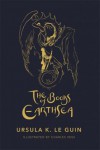Arbie's Unoriginally Titled Book Blog
It's a blog! Mainly of book reviews.
Currently reading

This is not a pop-science book. It's not even a textbook, really. Instead it is a collection of "review arictles." Review articles (for those who don't know) are technical papers that, instead of presenting new research, attempt to summarise the current state of knowledge about some research topic. Hence they tend to assume you already know quite a bit and tend to ignore things like basic definitions, underlying principles and the concept of starting simple and increasing in sophistication.
In other words, you have no hope of understanding this book unless you are already familiar with the basic concepts of magnetospheric science. On the other hand, it collects an awful lot of information about comparative solar system objects's magneto-tails into one place and is therefore areally useful reference volume.
Here's what it's all about: The sun is constantly emitting plasma into space. This is the solar wind, famous from Arthur Clarke's story "Sunjammer". It carries a magnetic field with it and all solar-system objects move through it. Magneto-tails are the distorted magnetic fields generated down-wind of solar-system objects by their interaction with the solar-wind.
Some objects have their own magnetic fields, some don't. Some have atmospheres, some don't. Some have ionospheres, some don't. Size, rotational velocity, distance from the sun, chemical composition - all these factors and more affect the size, shape and dynamics of magneto-tails.
Some magneto-tail facts to amaze the masses:
Jupiter has the largest magnetotail of any solar system object, thousands of times longer than the planetary radius, so long that it stretches out to the orbit of Saturn and probably beyond.
The solar wind is supersonic, so "bow-shocks" form between the solar wind and the surface of planets that have their own magnetic fields. These regions drastically slow down the solar-wind and prevent the surfaces being hugely irradiated by it. Or put another way, we wouldn't exist if Earth didn't have a strong internal magnetic field. Bow-shocks are similar to the shock waves "sonic booms" caused by jets crossing the sound barrier. Earth is creating noise pollution on an interplanetary scale!
Ganymede is the only natural satellite known to have an internally generated magnetic field. It doesn't have a bow-shock because it sits entirely inside Jupiter's magnetosphere where the solar wind has already been decelerated below the speed of sound.
Uranus' magnetotail, instead of being a typical long, stretched out thing resembling a drop of water just about to detach from a leaky tap (faucet) has a corkscrew-like shape. This is because of it's unusual axis of rotation and internal magnetic field orientation.
A comet's tail does not tell you anything about its direction of motion, instead it tells you which way the solar wind is blowing in the same way a flag tells you which way the wind blows.
 2
2










